Dive Sites of Krabi
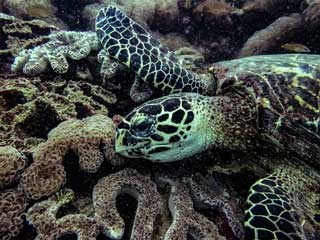
Koh Phi Phi
Phi Phi is our main dive destination, with around 20 dive sites that are suitable for divers of all levels and a wide variety of sea life.
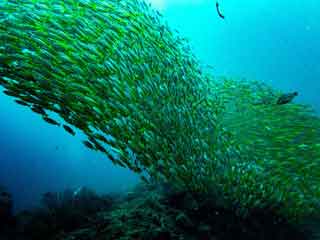
Bida Islands
Bida Nok and Bida Nai are two small islands immediately south of Koh Phi Phi, and are considered two of the best sites around Phi Phi.
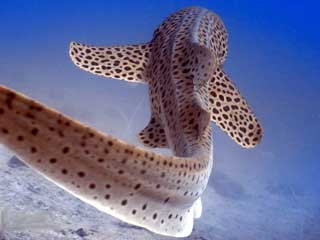
Shark Point (ASK Cluster)
Anemone Reef, Shark Point, and King Cruiser Wreck are three fantastic open-ocean sites grouped in a small cluster between Phuket and Koh Phi Phi.
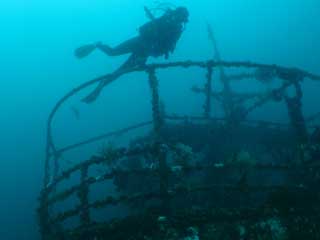
Wrecks
Advanced Divers can dive some deeper wrecks that have sunk in the area, serving as artificial reefs with loads of life.
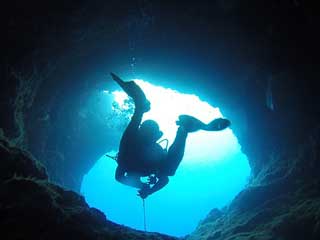
Koh Haa
A longer journey from Ao Nang, the various sites around Koh Haa (5 Islands) boast a large cavern and generally excellent visibility.
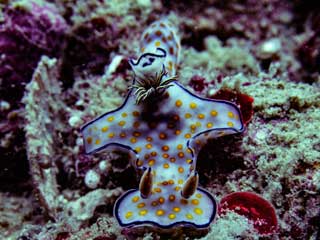
Ao Nang Local Islands
A short distance from mainland Krabi, the Ao Nang Local Islands are a small group of sites that feature good macro life.
Koh Phi Phi
Located about a two hour boat ride from Ao Nang Krabi, Koh Phi Phi is made up of two islands – the bigger Koh Phi Phi Don and smaller Koh Phi Phi Ley. They are both world-renowned for their beauty. Stunning cliffs rising out of the seas create scenery not easily matched anywhere in the world. Fortunately for us divers, the same can be said for the beauty underneath the waters. For this reason, the Phi Phi Islands are our main dive destination.
Here we can find around 20 different dive sites. You can see sea turtles and blacktip reef sharks at various spots. Leopard sharks, though becoming more rare, are a special sight and still possible to see in some spots. The macro life is decent as well, boasting a variety of nudibranchs, shrimps, and an occasional seahorse. Colorful soft corals blanket many of the sites we visit here.
For the more experienced divers, there is the possibility to explore two wrecks located close by, the King Cruiser and Kred Gaeow. The Bida Islands are also not far. The Bida Islands are two world-class dive sites boasting sharks, turtles, abundant macro, colorful corals, and huge schools of fish. Most of the remaining sites are located right off the coast of either Koh Phi Phi Don or Koh Phi Phi Ley. The big islands offer protection, reducing the likelihood of much current and making the area perfect for beginner divers.
Dive trips to the Phi Phi Islands leave early morning and return late afternoon, and depart daily (weather permitting).
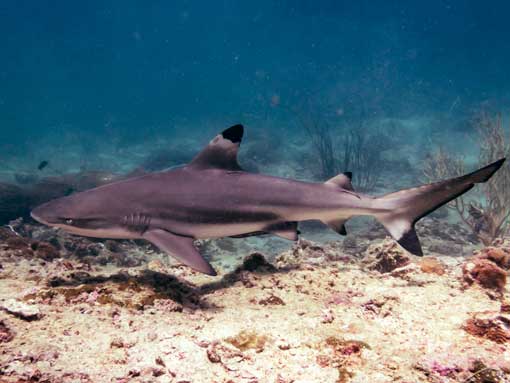
Quick Facts – Koh Phi Phi
- No. of Dive Sites: 20
- Level: Easy to Advanced
- Current: Mild
- Depth: 0-18 meters, up to 25-30 meters at some sites
- Visibility: Good (10-20 meters on average)
- Water Temperature: 27-30°C (80-85°F)
- Sea Life: Blacktip reef sharks, hawksbill sea turtles, giant moray eels, soft corals, big schools of fusiliers, leopard sharks
- Journey Time from Ao Nang: 2 – 2.5 hours
- Best Time to Dive: October to May
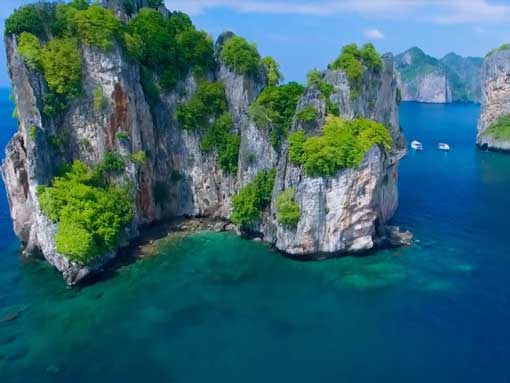
Quick Facts – Bida Islands
- No. of Dive Sites: 2
- Level: Easy to Advanced
- Current: Moderate
- Depth: 0-30 meters
- Visibility: Good (10-20 meters on average)
- Water Temperature: 27-30°C (80-85°F)
- Sea Life: Blacktip reef sharks, giant schools of fusiliers, barracudas, blue spotted stingrays, squid, octopus, hawksbill sea turtles, leopard sharks
- Journey Time from Ao Nang: 2.5 hours
- Best Time to Dive: October to May
Bida Islands
The Bida Islands are two small islands immediately south of Koh Phi Phi Ley. They are normally considered to be a part of the Koh Phi Phi dive sites because of how close they are. However, the Bida Islands are so good that they really stand in a class of their own.
The two islands are called Bida Nok and Bida Nai, and they each boast an impressive amount of life. Divers can frequently spot blacktip reef sharks in the shallows, with the possibility of a leopard shark resting in the deeper sand. You can see schools of fusiliers numbering easily into the thousands. Also keep an eye out for big hunting golden trevally, lurking around the schools of small fish ready to swoop in for a meal.
At both sites, it is possible to explore areas as deep as 30 meters. There you can find pinnacles exploding with life. However, don’t overlook the shallower areas, where the sharks usually reside along with squid and octopus. There is impressive macro life here as well, with many shrimps, nudibranchs, and even ghost pipefish if you’re lucky!
Normally the Bida Islands are suitable for beginners as well as more advanced divers. Be aware, though, that currents can become stronger during the rapid tide changes around full moon and new moon.
Shark Point (ASK Cluster)
In the open ocean, west of Koh Phi Phi Don and on the way to Phuket, are three excellent dive sites in a small cluster known as the ASK sites. Anemone Reef, Shark Point, and King Cruiser Wreck are each top-notch sites offering superb diving. Located roughly two hours from Ao Nang, the sheer quantity of sea life on display makes these sites one of the top highlights of scuba diving in Krabi.
Conditions can be challenging at times. As these sites are in the open ocean, lacking any protection from land, currents can be strong. Each of the sites runs as deep as 25-30 meters, but at Shark Point and Anemone Reef there are plenty of shallower areas to explore. King Cruiser Wreck, however, is a deep site that should only be reserved for Advanced Divers or divers with prior deep diving experience. If you are not yet qualified for deep diving, King Cruiser is a prime opportunity to complete your Advanced training. There are so many fish that it is truly like swimming in an aquarium. Shark Point, named for the possibility to see leopard sharks resting in the sand, has tons of life and perhaps the best, most colorful soft coral displays in the area. Anemone Reef, which as the name suggests is covered in anemones, is home to various unique kinds of moray eels, such as white-eyed and fimbriated morays.
On our trips to the ASK cluster, we always plan for three dives and try to go when the current is not strong. If you have the opportunity to dive these sites, you should absolutely take advantage. If you want to read more, check out this blog post for a detailed profile of each site.
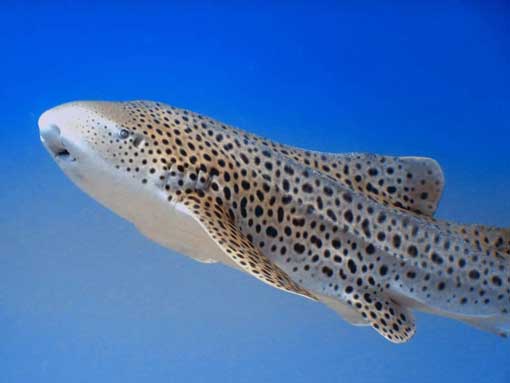
Quick Facts – ASK Cluster
- No. of Dive Sites: 3
- Level: Intermediate to Advanced
- Current: Moderate to Strong
- Depth: 0-30 meters (King Cruiser 18-30 meters)
- Visibility: Fair (5-15 meters on average)
- Water Temperature: 27-30°C (80-85°F)
- Sea Life: Leopard sharks, big schools of barracudas-fusiliers-snapper, rainbow runners, lionfish, scorpionfish, various kinds of moray eels, soft corals, blue spotted stingrays, cuttlefish
- Journey Time from Ao Nang: 2 hours
- Best Time to Dive: November to April

Quick Facts – Wrecks
- No. of Dive Sites: 2
- Level: Advanced
- Current: Moderate to Strong
- Depth: 18-30 meters
- Visibility: Fair (5-15 meters on average)
- Water Temperature: 27-30°C (80-85°F)
- Sea Life: Massive schools of fusiliers-barracudas-snapper, rainbow runners, golden trevally, lionfish, scorpionfish, nudibranchs, bamboo shark
- Journey Time from Ao Nang: 2-2.5 hours
- Best Time to Dive: November to April
Wrecks
Underwater shipwrecks serve as fantastic artificial reefs. In fact, at the wreck sites around Koh Phi Phi, we often see even higher concentrations of fish than at the natural reef sites. Perhaps you read about the King Cruiser Wreck in the previous section. This former ferry boat actually sunk in an accident in 1997 while running its route from Phuket to Koh Phi Phi. Fortunately there were no casualties, and now the wreck is home to many thousands of fish that can find protection within the structure. Sometimes when diving this site, you are so surrounded by fish that you cannot see anything else. We dive the King Cruiser Wreck on every trip to the Shark Point sites (ASK cluster).
In contrast, when we are diving the sites of the Koh Phi Phi Islands, we have the Kred Gaeow Wreck. A very short ride from the east coast of Koh Phi Phi Ley, the Kred Gaeow was purposely sunk in 2014 for the purpose of making an artificial reef. It has seen excellent coral growth in its relatively short time underwater. It is smaller than the King Cruiser Wreck, but still loaded with many types of fish. You can see barracudas, fusiliers, pufferfish, scorpionfish, lionfish, and even the elusive frogfish if you have really good eyes.
Due to the depth and potentially strong currents, you must be an Advanced Diver or have previous deep diving experience to dive either of the wrecks. If you do not yet have deep diving experience, consider doing your Advanced training on these fantastic sites.
Koh Haa
Koh Haa in Thai means five islands, and – you guessed it – there are a cluster of five islands with many excellent dive sites in this marine park. The Koh Haa sites are famous for great visibility. You can often get visibility of 25 meters or more in this area. These are the furthest sites we will travel to from Ao Nang. The trip by big dive boat is over three hours long each way.
Koh Haa Yai, or the Big Island, features a brilliant cavern/cathedral. There is also a chimney swim through at Koh Haa Nung (Island One). There is a shallow lagoon in front of Koh Haa Sam (Island 3) which is perfect for snorkelers and beginner divers.
There is a wide variety of life on display at each of the Koh Haa dive sites. Barracudas, giant moray eels, scorpionfish, and even stonefish, and the elusive ghost pipefish all reside here. You can sometimes see a hawksbill sea turtle munching on some soft corals. Take an occasional glance out into the blue for a chance to see a big pelagic species passing by. Lucky divers at Koh Haa have seen whale sharks, eagle rays, and even manta rays. Don’t forget about the macro life, either. Underwater photographers can have a field day with the variety of small creatures you can see here.
Because Koh Haa is such a long trip, we generally go only once every two weeks during the right time of year.
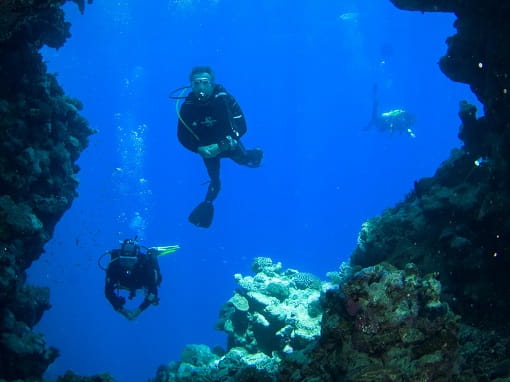
Quick Facts – Koh Haa
- No. of Dive Sites: 10
- Level: Easy to Advanced
- Current: Mild to Moderate
- Depth: 0-30+ meters
- Visibility: Excellent (20-30 meters on average)
- Water Temperature: 27-30°C (80-85°F)
- Sea Life: Giant moray eels, scorpionfish, stonefish, barracudas, hawksbill sea turtles, possibility of big species like whale shark, manta ray, and eagle ray
- Journey Time from Ao Nang: 3.5 hours
- Best Time to Dive: November to April
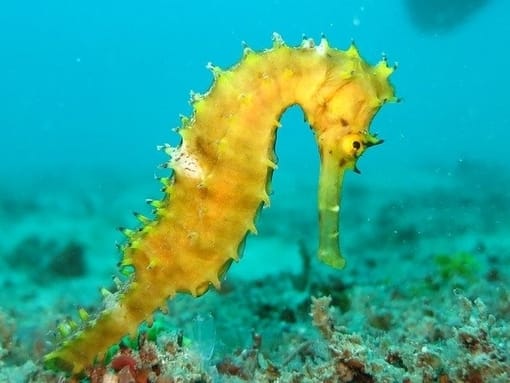
Quick Facts – Ao Nang Local Islands
- No. of Dive Sites: 10
- Level: Easy to Advanced
- Current: Moderate
- Depth: 0-20 meters
- Visibility: Poor (2-12 meters on average)
- Water Temperature: 27-30°C (80-85°F)
- Sea Life: Bamboo sharks, seahorses, nudibranchs, blue-spotted stingrays, banded sea snakes, barracudas
- Journey Time from Ao Nang: 30-40 minutes
- Best Time to Dive: October to May
Ao Nang Local Islands
An abundance of marine life resides in the area of the Ao Nang Local Islands, only a 30-40 minute boat ride away. Diving here will reward you with exceptional macro life, including varieties of seahorses, pipefish, and nudibranchs. Bamboo sharks frequently hide within the rocks, and blue-spotted stingrays roam the sandy bottom.
Although these sites are the easiest to access from Ao Nang, be aware that visibility is unpredictable. It is possible to get visibility of 5 meters or even less. But by no means are these poor dive sites. Many more experienced divers actually prefer the Ao Nang Local Islands to any of the more distant alternatives like Koh Phi Phi. They can find a playground of swimthroughs, caves, and caverns at various of these sites. For macro photographers, you may find some of your best subjects around here. It is also possible to do a night dive and be back in time to enjoy the evening.
Although we generally focus more on the Phi Phi trips, we can usually organize a trip to the Ao Nang Local Islands on demand for at least two divers. It is best to have more advanced notice in this case, so please get in touch with us if you are interested to explore this area.